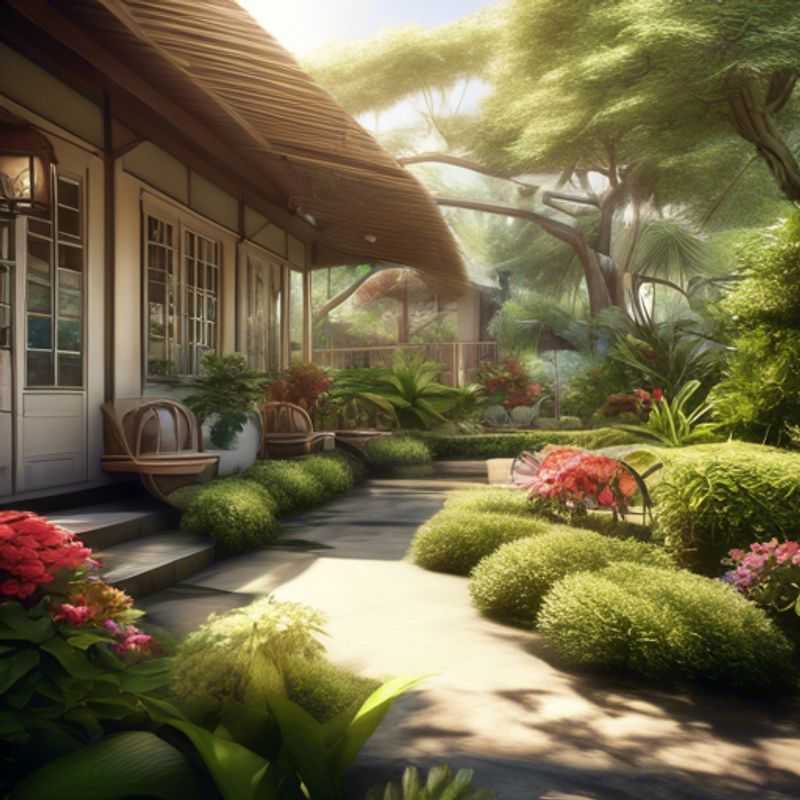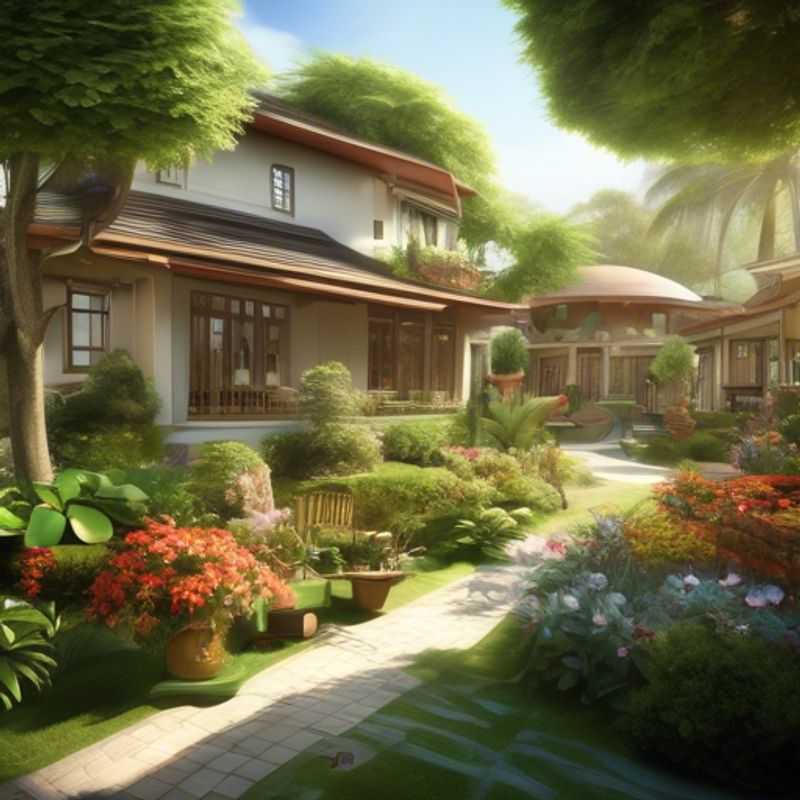Top Things to Know Before Buying Shade for Home and Garden

Top Things to Know Before Buying a Shade for Your Home and Garden
Planning to add some shade to your home and garden? It's a great way to enjoy the outdoors comfortably, but before you head to the store, there are a few key things to consider. Here's a practical guide to help you make the right choice:
1. Measure it Out: The first step is to accurately measure the area where you want to install the shade.

Measure Twice, Shade Once: Getting the Right Fit for Your Shade
Before purchasing a shade, accurately measuring the area where it will be installed is crucial. This ensures proper fit and prevents the shade from being too small or large. Use a measuring tape and carefully measure the width and length of the space where the shade will be mounted. Take into account any obstructions like windows, doors, or furniture that might affect the shade's placement. Consider the shape of the area, whether it's rectangular, square, or circular, as this will determine the type of shade you need. When measuring for a shade, it's always best to err on the side of caution and measure slightly larger than the actual space to ensure a comfortable fit. For complex shapes or custom-made shades, it is best to consult with a professional for accurate measurements.
Ensure you have accurate measurements before purchasing a shade to guarantee a perfect fit.

Choosing the Right Shade Material for Outdoor Durability
When selecting an outdoor shade, material and durability are paramount for long-lasting performance and safety. Consider these factors for a wise investment:
Fabric: Choose fabrics that resist UV rays, water, and mildew. Popular options include polyester, acrylic, and vinyl, each with its strengths and weaknesses. Polyester offers affordability and durability, while acrylic provides excellent UV protection and fade resistance. Vinyl is known for its water-resistant properties and durability.
Frame: Aluminum frames are lightweight, corrosion-resistant, and affordable, making them a popular choice. Steel frames provide greater strength and durability but are heavier. Consider the weight and wind resistance requirements for your location.
Durability: Look for shades with reinforced seams, strong stitching, and robust construction. Invest in higher-quality materials and construction for increased longevity.
Maintenance: Regular cleaning and care are essential for extending the life of your outdoor shade. Check manufacturer instructions for specific cleaning recommendations. Investing in a shade with easy-to-clean materials will save you time and effort in the long run.

UV Protection for Fabrics: Choosing the Right Shades to Prevent Fading
Ultraviolet (UV) radiation from the sun can damage fabric fibers, causing fading and discoloration. This is especially true for fabrics that are frequently exposed to sunlight, such as outdoor furniture upholstery, curtains, and clothing. To prevent fading, it’s essential to choose shades that offer UV protection.
Look for shades with a UV protection rating of UPF 50+. This means that the fabric blocks 98% of the sun’s harmful UV rays. You can find shades with UV protection in a variety of styles, colors, and materials, so you can find the perfect option for your needs.
In addition to using shades with UV protection, there are other steps you can take to protect your fabrics from fading. For example, you can avoid hanging your clothes in direct sunlight and you can use a fabric protector spray. Regularly cleaning and maintaining your shades will also help to prolong their lifespan.
Choosing shades with UV protection is a simple and effective way to protect your fabrics and keep them looking their best for years to come. When shopping for shades, always make sure to check the UV protection rating. You may have to pay a little extra for shades with UV protection, but it is a worthwhile investment in the long run.

Evaluating Installation Ease: Hardware Needs and DIY Potential
Evaluating the ease of installation and required hardware is crucial for any product purchase. This assessment determines how much effort and cost will be involved in setting up the product, impacting the overall purchase decision. It's essential to consider the following factors:
Installation Complexity: The product's instructions should be clear and concise, and the installation process itself should be straightforward. Look for products with well-designed manuals, videos, or online resources to guide the user through the process. If the installation requires specialized tools or expertise, consider the potential cost and availability of these resources.
Hardware Compatibility: Ensure the product is compatible with your existing hardware, including operating system, software, and peripherals. Check for minimum system requirements and verify if the product requires additional hardware components. Consider the potential costs associated with acquiring compatible hardware, such as upgrading existing components or purchasing new ones.
Installation Costs: Factor in the potential cost of hiring a professional installer, particularly if the product requires specialized expertise or if you lack the technical knowledge to handle the installation yourself. If you plan to install the product yourself, consider the cost of any required tools or materials.
Time Commitment: Estimate the time it will take to install the product, considering the complexity of the process, your own technical skills, and any potential delays. Factor in the cost of lost productivity or time spent on the installation process.
By carefully evaluating these factors, you can make an informed decision about the ease of installation and required hardware for any product. This assessment ensures a smooth and cost-effective installation process, minimizing frustration and maximizing value.

Beyond the Price Tag: Checking Warranty and Reviews for Product Quality
When purchasing a product, it’s essential to ensure its quality and longevity. Two key aspects to consider are the warranty and customer reviews. A good warranty provides peace of mind, protecting you against defects or malfunctions for a specified period. It’s crucial to read the warranty terms carefully, understanding what’s covered, the duration, and any limitations. Customer reviews offer invaluable insights into the product’s performance, reliability, and customer satisfaction. Reading a diverse range of reviews helps you assess the product’s strengths and weaknesses, guiding your decision.
While warranty information is usually readily available on product packaging or manufacturer websites, you may need to explore online platforms like Amazon or manufacturer websites to access customer reviews. When scrutinizing reviews, be aware of potential bias and focus on those offering detailed and unbiased feedback. Remember, a combination of a robust warranty and positive customer feedback contributes significantly to making a well-informed purchase decision, maximizing your chances of acquiring a quality product.

Light Filtration & Privacy: Choosing the Right Window Treatments
Determining the desired level of light filtration and privacy is crucial when selecting window treatments. Consider the specific needs of each room and your overall style preferences.
Light Filtration:
- **Sheer curtains:** Offer subtle light diffusion while allowing some view outside. Ideal for living rooms or bedrooms where you want a bright atmosphere but some privacy.
- **Light-filtering blinds:** Provide adjustable light control, letting you choose the level of brightness. Options include roller blinds, cellular shades, or Roman shades.
- **Blackout curtains:** Block almost all light, perfect for bedrooms, media rooms, or offices that require darkness.
Privacy:
- **Opaque fabrics:** Choose heavy fabrics like velvet or linen for complete privacy.
- **Privacy films:** Apply these films to windows for one-way visibility, allowing you to see outside but not the other way around.
- **Window treatments with linings:** Consider blackout lining for increased privacy and heat insulation.
Important Considerations:
- **Room orientation:** Consider the direction your windows face, as sunlight intensity varies throughout the day.
- **Personal preference:** Choose a style that aligns with your décor and desired level of light and privacy.
- **Cost:** Window treatments range in price, from budget-friendly options to high-end designs.
- **Maintenance:** Consider the ease of cleaning and upkeep for your chosen window treatment.

Styling Your Home & Garden: Exploring Colors and Styles for a Cohesive Look
Transforming your home and garden with vibrant colors and styles can be an exciting journey. It's a personal expression of your taste and a way to create a welcoming and aesthetically pleasing space. Choosing the right color palettes and styles can make a world of difference in how your home and garden feel. There are a few crucial things to keep in mind when embarking on this project.
First, consider your home's existing architecture and style. Do you live in a traditional, modern, or contemporary home? The style you choose for your outdoor space should complement the existing style of your home. For instance, a Victorian home might benefit from classic garden designs, while a modern home might look better with minimalist landscaping and clean lines.
Next, think about the colors you want to use. While you can choose colors that you love, remember to consider the natural light that your garden receives throughout the day. Warm colors like reds, oranges, and yellows can make a space feel cozier, while cool colors like blues, greens, and purples can create a sense of calm and serenity. Use color to create a mood and highlight specific areas of your garden.
For practicality and sustainability, consider your local climate and soil conditions. Choosing plants that thrive in your area can save you time and money in the long run, reducing the need for extensive watering or fertilizers. Look into native plants, which are already adapted to your local environment and often require less care.
Lastly, don't underestimate the power of accessories and outdoor furniture. These elements can add a personal touch and complete the look of your outdoor space. From cozy seating areas to whimsical sculptures, the possibilities are endless. Just remember to choose elements that complement your overall style and color scheme, and to choose durable materials that can withstand the elements.
